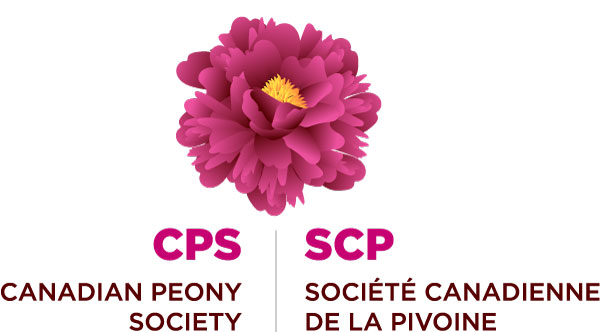Creating New Peonies
Arthur Percy (A.P.) Saunders, over his long career as a peony hybridizer, had over 17,224 seedlings (hybrids, tree peonies and species peonies) in his gardens. He propagated and named only 271 of them. Interestingly, only 11 of these were officially registered. An additional 15 of his peonies were either sold or given away by him as unnamed seedlings and these were later named by other peony enthusiasts. So, it is important to realize, as Saunders did, that not every peony seedling is worth naming.
The American Peony Society (APS) is responsible for registering new introductions using the International Code of Nomenclature for Cultivated Plants, guidelines published by the International Society for Horticultural Science. Reiner Jakubowski, APS registrar (and former President of the Canadian Peony Society or CPS), has been fulfilling this task since 2004 and is the third-longest serving registrar in the APS history. In a recent interview, Mr., Jakubowski said the most important purpose of registration is to achieve some control of the names and to prevent duplication.
At its very beginning, in 1903, the APS was interested in bringing order to the chaos that was peony nomenclature. In the first years, the Society worked with Cornell University and the Society’s own membership to determine which peonies were worth keeping in commerce. AP Saunders was involved in this phase as he was then Secretary of the Society and one of his responsibilities was publishing the lists of peonies in commerce in the Society’s Bulletin, as well as analyzing the results.
As registrar, Mr. Jakubowski does not assess the quality of the plant, which is outside his scope. Rather he tries to ensure that the name being proposed by the breeder has not been used before. He does admit that despite attempts over the years since the APS began, duplicate names have occurred for various reasons, including alternate spellings of names.
He noted that the number of peonies registered annually has gone from 11 in 2009 to 80 and 86 in 2017 and 2018, respectively. Over the last nine years, hybridizers in the United States have led the way in terms of registering new introductions with 176 offerings. In terms of other countries, growers in Sweden registered 51, in Canada and Germany 37 each, in Austria and China 17, in the Ukraine and the Netherlands 7, followed by 2 in Slovakia and 1 each in Norway and New Zealand. Over the past 100 years, most of the important breeding work of peonies has been done in the US. Many of the lineages of today’s introductions can be traced back to A.P. Saunders.
Mr. Jakubowski believes that if gardeners are interested in breeding peonies, they should pursue it. There are two ways to create new peonies. The first is to collect the seeds produced by open pollination of peonies, done by bees, or through the seed program offered by the American and Canadian peony societies. Seeds can either be planted directly into the ground or be placed in individual baggies of vermiculite in a fridge. It is important to know that peony seeds require a two-stage dormancy – first warm and moist during which time they grow a root as temperatures dip a bit, followed by a cold period. Information on germinating peony seeds can be found elsewhere in this section of articles.
A.P. Saunders once said: “The actual process of fertilization... with the peony (is) easy. You simply bring some pollen on one plant and put it on the stigma of a flower of another plant, and leave nature to do the rest”. So following his lead, the second option is to choose which peonies you wish to cross. This second option, in Mr. Jakubowski’s view, is the most satisfying because seeds are produced through controlled pollination. You choose which two peonies you want to cross. Quebec peony seller, Manon Capano, has an excellent site to inform beginner hybridizers, https://www.pivoinescapano.com/
Mr. Jakubowski stressed it's important to use good breeding stock - peonies that have aesthetic appeal (colour and bloom form, foliage) and are known to be fertile. Not all peonies are fertile. By looking at the parentage used by breeders from A.P. Saunders to modern day ones, Mr. Jakubowski added, will give beginners clues as to good potential peony parents. Information on the peonies that have been used in breeding can also be found in the Excel spread sheet, Peony Parents, which is available on the Canadian Peony Society website: https://peony.ca/.
Before registering a seedling deemed worthy, it is important that there be more than one plant. Registration costs just $25 US. A visit to the APS website at https://www.americanpeonysociety.org and clicking on the Cultivar Reg. tab will provide details about the traits or characteristics of the peony that need to be recorded during the growing season. Mr. Jakubowski recommends breeders not rely on memory as some requirements necessitate measurement. A photograph of the peony to be named is also helpful. Once accepted, the information on the peony and a photograph is published in the APS Bulletin, which is quarterly.
As of 2017, the APS has registered 2,786 peonies since the Sciety started. He estimates there are 11 to 12,000 peonies in the APS database. Peonies introduced prior to 1923 are not registered but are part of the record and in the registry. And, Mr. Jakubowski believes there are many more as peony enthusiasts do not always register their introductions for various reasons. In addition, he concluded there are many peonies of which he has no knowledge of or for which reliable documentation has not been found.
